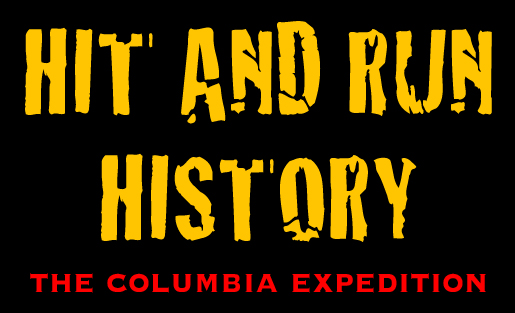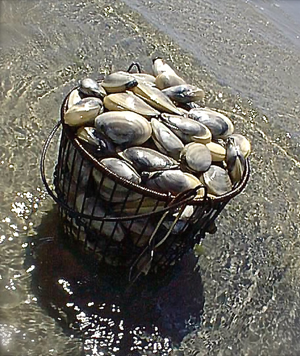 On a brilliant July day, with a southwest breeze off Nantucket Sound across the Common Flats off Monomoy Island, I found myself on my hands and knees before the clam hole I had just dug. The tide had been down for a couple hours, and the beach was warm on my legs and feet. Even through my blue Atlas gloves, drenched from plucking steamer clams from half a foot below the surface, I felt the heat of the otherwise-cool sand.
On a brilliant July day, with a southwest breeze off Nantucket Sound across the Common Flats off Monomoy Island, I found myself on my hands and knees before the clam hole I had just dug. The tide had been down for a couple hours, and the beach was warm on my legs and feet. Even through my blue Atlas gloves, drenched from plucking steamer clams from half a foot below the surface, I felt the heat of the otherwise-cool sand.
I couldn’t get up.
Weeks later, I became a commercial shellfisherman from Cape Cod sidelined by a devastating EKG. I was ordered to avoid strenuous exercise and especially picking up anything heavy — the very definition of clamming — my mind turned to a story that began with a man collapsing on a beach.
On Valentine’s Day of 1787, Captain James Cook, the greatest explorer of his time, marched ashore with John Ledyard and other Royal Marines in a power play on the island of Hawaii. It ended with Ledyard’s men foundering back to the HMS Resolution, and Cook, face down in the water, with a dagger in his back.
Aside from fishing, the one thing going for me was knowledge of the story that begins with Cook’s demise. Ledyard, an American impressed into British service, deserted and returned home with a trade secret.
I would make a film about it.
But the project became so much more than a film. It evolved into “Hit and Run History,” which has since traveled around the world as an adventure/travel history series.
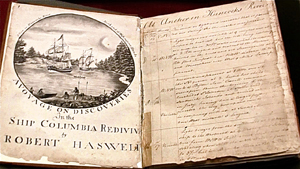
“Hit and Run History” was born at the dawn of the Great Recession when many skilled and talented people would find themselves suddenly laid off. At the same time, technological advancements like the Canon 5D Mark II, an SLR which shot in full HD, and the Apple MacBook Pro were making digital filmmaking accessible to the masses. Like never before, people with time on their hands had the tools to easily become digital storytellers with a global audience. Myself included.
We set out to follow the first American circumnavigation of the globe, the Columbia Expedition. We started in New England, then across to Cape Verde in 2009. In 2010, PBS-powerhouse WGBH commissioned a series of related biographies based around the Northeast U.S. Then in 2011, “Hit and Run History” was back on Columbia’s track, headed to the Falklands. A second series, aimed at elementary classrooms, “Through My Eyes,” was shot in China’s Pearl River Delta. Both projects cruised around Cape Horn in 2012. This May, we will film at the mouth of the Columbia River as the replica tall ship Lady Washington enters to meet the Chinook Indian nation.
History worth telling
An ad hoc syndicate formed in Boston to finance the first American voyage ‘round the world in autumn of 1787. The Columbia Expedition could pull the region out of post-war recession and start the new American Republic on a path to global trade.
“This was one of the great investment opportunities of all time,” said Dr. Mary Malloy of the Sea Education Association in Woods Hole.
Never heard of Columbia or her commander, John Kendrick? That’s the appeal. When not clamming, I researched and wrote on the topic for a dozen years. But what I intended in 2008 as a series of book trailers quickly turned into a documentary. Matthew Griffin, a local friend and former clammer, agreed to help with filming.
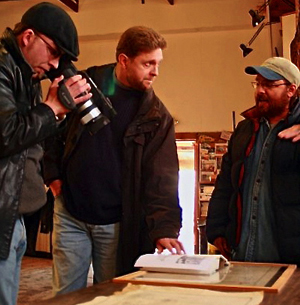
How are we going to make this?
Our challenges were numerous.
A bare bones budget: Forced to give up clamming, money was scarce. Matt had a day job. We had one day a week for shooting.
Our location: We live at the elbow of Cape Cod. We wouldn’t be mixing with film or media types at the local coffee shop. We were on our own.
Our destination: Columbia went around the world. Captain Kendrick’s route would take us from Boston to the West Coast of Africa. Then the Falklands, near the Antarctic Circle. Then islands off Chile. All along the Pacific Northwest Coast. Hawaii. China. Japan. The Philippines. Airfare alone was intimidating.
No experience: I did not own a camera. Nor did Matt. I had no idea how to edit video. Nor did Matt.
No reputation: We’d never made a film.
But when you’re descended from people who thought a viable career option was getting on a wooden ship and sailing off into the unknown for three years or more, with a paper chart and a sextant to guide them, few things deter you.
Four Horsemen to the Rescue
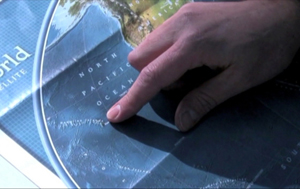
Enter four helpful geeks. Apple’s Steve Jobs, Amazon’s Jeff Bezos, Facebook’s Mark Zuckerberg, and Google’s (YouTube’s owner) Larry Page. Each made contributions.
Advancing technology: With my tax refund, I bought a MacBook Pro running top-of-the-line editing software — impossible when I started my work a decade earlier.
Thanks Steve.
We later bought a small Canon HF100 that shoots in HD which recorded to an SD card, and a shotgun mic. All based on reviews on Amazon and delivered to our door rather than having to drive hours to Boston to compare.
Thanks, Jeff.
Social Media: Facebook was just gathering steam, and I went on a friending spree. Soon I had hundreds of contacts in television, newspapers and radio in New York, Boston, L.A. and D.C. We created a fan page and started sharing our experiences in filming around New England. We got valuable feedback.
Thanks, Mark.
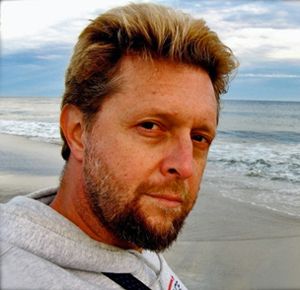
Changing tastes: As viewers watched more online video and reality television, rough camera handling and wise-cracking hosts became acceptable. It didn’t have to look gorgeous. Our approach to filming was “leave the camera running.” Edit later. To expand the audience, we needed to be less Ken Burns and more Anthony Bourdain.
Thanks, Larry.
We also had a few ideas of our own. Our public access station provided equipment needed to get going. We would film just a pilot, focused on the prelude to the ship’s departure, saving the rest for later.
Music from local bands gave us a hip sound and pacing. Our gathering crew were friends interested in taking the story on the road for further episodes. We qualified for grants from a few local Cultural Councils for seed money. And I thoroughly knew the topic I was talking about.
Within six months, we finished our pilot.
Now what?
Barriers to distribution abounded.
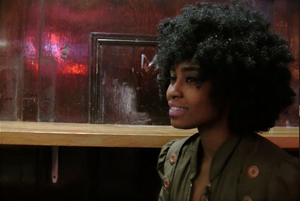
Not pretty: Roughly filmed, it wasn’t going to win any awards.
Format: Only 35 minutes, it ended as the expedition left port. It was too short for many film festivals, too long as a trailer.
Subject: No one knew the story. There was no large following of Columbia buffs, re-enactors or students being taught the topic.
Shrinking budgets: Broadcasters were no longer commissioning shows. With no track record, we were asking to be set loose across the world.
We Surf the Wave
We didn’t lower our expectations. We changed them. By early 2009, it was clear that viewers would be moving away from long-form documentary, and even from one-hour commercial broadcast television. The tide was turning towards online.
Screenings: Our three Massachusetts Cultural Council grants required us to host live events in the awarding communities. We held a dozen, even in towns that turned us down for grants. Audiences didn’t bat an eye at the rough quality. All ages liked the story, and loved our casual style of involving our crew.
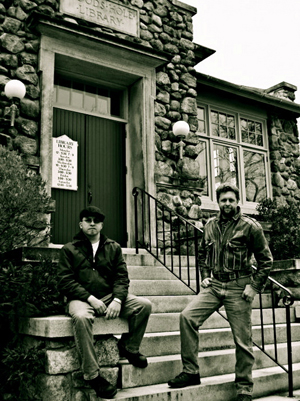
Growing budget: After seeing our work, towns that had turned us down for grants asked us to reapply for their next round. Venues started calling us, asking what our fee was. We could count on more money for a second episode.
What could we do if we were able to film in an exotic location on the other side of the world? Audiences said they wanted to watch it all now. Online.
At a packed screening for our Cape Cod premiere, I announced we would not be waiting for broadcasters to commission further episodes. Columbia left Boston Harbor on October 1, 1787, and made its first stop in the desert archipelago of Cape Verde. In November of 2009, we would head there, too.
Whether faced with a national emergency as we were in Cape Verde or, like this week, when the Falkland Islands vote on the question of their status (vis a vis Argentina’s claims) as we roll out our series shot in the disputed territory, we’ve found that staying nimble is what works. Traveling the world as we follow our story gives us opportunities to cover contemporary issues as we adapt to the rapidly evolving media landscape. As with sailors of Columbia, we may find our approach and ourselves greatly changed by the time this is all over. We’re looking forward to seeing how it all turns out.
Master mariner and op-ed columnist Andrew Giles Buckley has followed the Columbia Expedition, the first American voyage ‘round the world, for 18 years. He founded “Hit and Run History” in 2008 to digitally bring this story and others to a global audience. In 2010, “HRH” premiered as the first original web content and centerpiece of WGBH’s History page. In 2011, he co-produced “China: Through My Eyes,” an elementary education travel series for WGBH’s Kids page. This 13-part series followed two American girls, ages 7 and 8, as they explore China’s Pearl River Delta. Subsequently, Buckley has taken productions of “HRH” and “TME” to Cape Verde, the Falklands, Cape Horn and Chile. Awarded 13 Massachusetts Cultural Council Grants and the first-ever Social Media Outreach Grant by the Massachusetts Foundation for the Humanities, Buckley has taught classes at The Learning Annex in New York, and is developing programming for live events for “Hit and Run History.” Follow the story on Twitter at @hitrunhistory.
